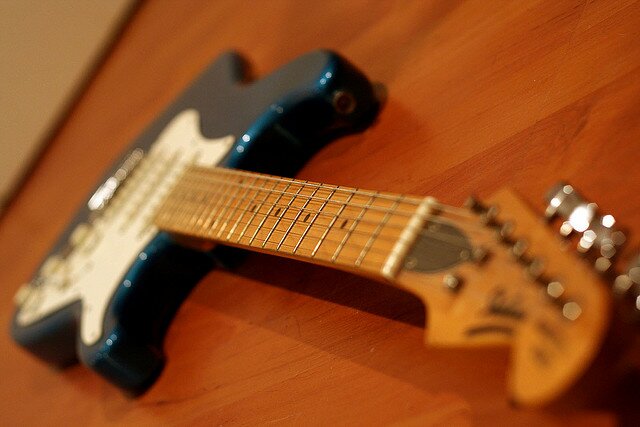
This lesson we will take a look at seventh arpeggios taking in the dominant 7th and the minor 7th arpeggios. In the same way that major and minor arpeggios are created using notes solely from the chords, the same applies for the seventh arpeggios. Major and minor chords are created using three notes stacked on top of each other. Seventh chords a created by simply adding an extra third from the scale in question above either a major or minor chord.
To create a dominant seventh chord you add a minor seventh to a major chord, and to create a minor chord you add the same note, a minor seventh, to a minor chord. The seventh arpeggios really come into use when playing blues or jazz. They can be used to improvise solos or to add in little fills around the chords. Below are two diagrams that show you what notes are included in the dominant seventh and minor seventh arpeggios:
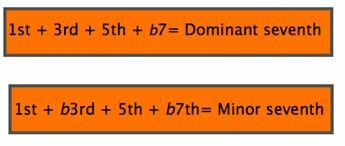
Below are three examples of the shapes you can use for dominant seventh and minor seventh arpeggios. Once again, these are only suggested shapes, if you know the structure of the arpeggios and the notes included in them, you can easily create your own shapes to accommodate your playing styles. The TAB shows the shapes written out in the key of C:
C Dominant 7th Arpeggio Positions:

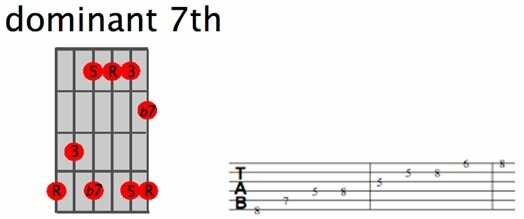
C Minor 7th Arpeggio Positions:

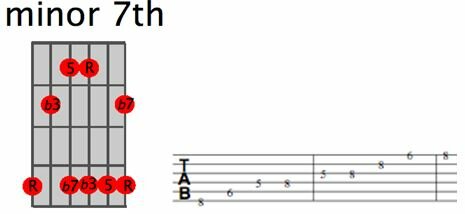
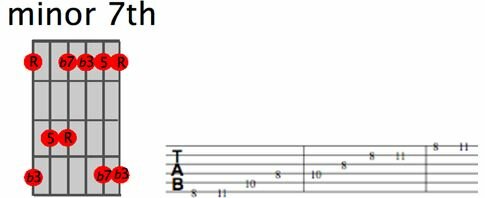
Once you have got familiar with these shapes, really try and see if you can work out other shapes for yourself. All you need to know is what notes are included in which arpeggio. Once you know this, you can set about finding the appropriate notes on the guitar and coming up with your own shapes. You’ll find that arpeggio shapes can be easily adapted to fit around chord shapes, thus giving you a good opportunity to add little licks and fills to your chord sequences.
RELATED One Octave Pentatonic Major Scales
To practice putting each shape into use, below is a chord sequence that you can put your arpeggios into action with. For each chord, try and play along to the backing track with the relevant arpeggio. For example, if the chord in question is a G7, play a G dominant 7th arpeggio over the top. If the chord is a Fm7 simply play a F minor 7th arpeggio. Below the chord sequence is an example in TAB of how this exercise could be played, but remember that you can come up with your own shapes in addition to the ones suggested in this lesson.
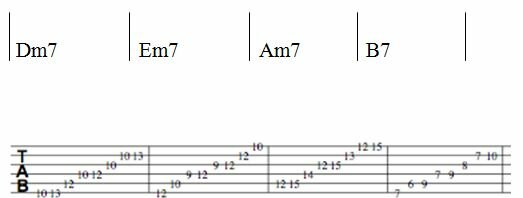
image credit – prescot